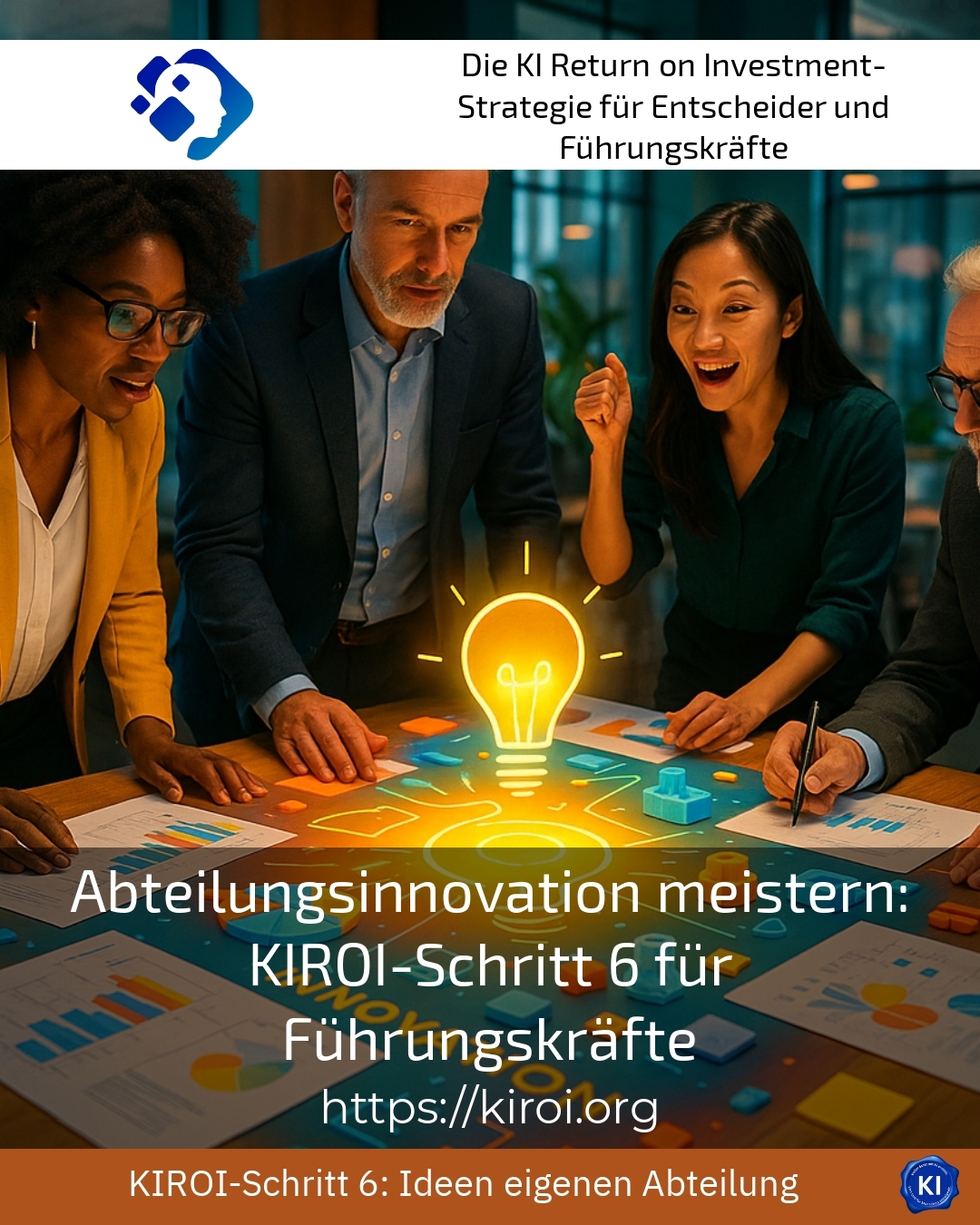The challenge of mastering departmental innovation presents many managers with complex tasks. Especially in a dynamic market environment, it is essential to manage the process of innovation in a targeted manner and to involve both employees and structures in the right way. The sixth step of the KIROI model provides valuable impulses on how innovation processes can be productively supported within teams. The topic of departmental innovation is particularly emphasised here in order to facilitate sustainable change.
Fundamentals of successful departmental innovation
Departmental innovation does not just mean developing new products or technologies. Rather, it also includes improvements to internal processes, communication channels and collaboration. Managers must therefore create an environment that actively promotes creativity and collaboration. For example, companies from the mechanical engineering sector report that employees have been able to discover unseen potential through targeted workshops to analyse problems and generate ideas.
In the financial sector, agile methods such as design thinking show how user-orientation can promote innovation. For example, teams there rely on iterative prototyping phases to develop new services directly in line with customer needs. The pharmaceutical industry is also increasingly using innovation management tools to strengthen both product development and interdisciplinary communication and thus support departmental innovation.
BEST PRACTICE with one customer (name hidden due to NDA contract)
In one manufacturing company, a joint innovation forum was initiated using KIROI Step 6. Here, employees from research, production and sales were able to systematically discuss challenges and develop new ideas. This significantly improved internal cooperation and the first pilot projects for process optimisation were launched.
The role of the manager in the sixth KIROI step
In the sixth step of the KIROI model, the manager actively supports innovation projects and ensures that suggestions from the teams can be implemented in a structured manner. It is important here not to overburden any employees, but to create scope for innovation through clear prioritisation and support.
In the IT sector, too, it is evident that managers drive innovation through open communication and regular feedback rounds. They organise innovation sprints in which teams can quickly create and test prototypes. In the retail sector, divisional managers rely on encouraging employees themselves to critically scrutinise processes and suggest improvements. This creates a lively culture of innovation that gradually permeates all areas.
BEST PRACTICE with one customer (name hidden due to NDA contract)
A software company used the sixth KIROI step to establish an innovation platform. Managers moderated the innovation dialogue there and ensured the linking of different competencies within the departments. The result was a higher quality of ideas and a faster market launch of new features.
Practical tips for implementation
For managers, the process of departmental innovation can be specifically supported with the following measures:
- Create specific time slots for creative phases - ideas need space and peace and quiet.
- Encourage cross-departmental dialogue, for example through interdisciplinary workshops.
- Use proven innovation methods such as Design Thinking or Effectuation to provide structures for targeted idea development.
- Focus on transparency and visibility: document innovation progress and celebrate small successes.
- Recognise employees as drivers of innovation and give them individual freedom.
In the automotive industry, managers report that a continuous improvement process has been established through the introduction of regular innovation meetings. In the energy sector, it has been shown that the involvement of external partners enriches the innovation process and opens up new perspectives. At the same time, HR managers emphasise how important it is to communicate innovation goals clearly and make them measurable.
Departmental innovation as a sustainable driver of success
Departmental innovation is not a one-off project, but requires long-term commitment. Managers who utilise KIROI Step 6 build a culture in which innovations are continuously lived. The transruption coaching supports them in overcoming resistance and encourages team ownership.
This approach is also appreciated in the healthcare sector because it improves the integration of medical staff and administration. Service providers also report that customer satisfaction has increased noticeably thanks to an innovation-friendly atmosphere. Innovation thus becomes a central pillar for long-term competitiveness.
BEST PRACTICE with one customer (name hidden due to NDA contract)
A medium-sized retail company was able to introduce a digital sales platform through the targeted use of the KIROI model as part of departmental innovation. The integration of all departments, from purchasing to customer service, resulted in internal processes becoming more efficient and new sales opportunities being tapped at the same time.
My analysis
The sixth step of the KIROI model offers managers valuable support in mastering departmental innovation. The active role of the manager in systematising ideas, providing resources and creating freedom is crucial for leading innovation processes to sustainable success. Practical examples show that innovation can be significantly increased through targeted communication and organisational measures. In this way, departmental innovation becomes an integral part of the corporate culture.
Further links from the text above:
Innovation management: How ideas become innovations
Innovation Leader - innovative leadership
The 7 most important innovation methods
Innovation management and leadership
Innovative methods and proven concepts for leadership development
For more information and if you have any questions, please contact Contact us or read more blog posts on the topic Artificial intelligence here.















